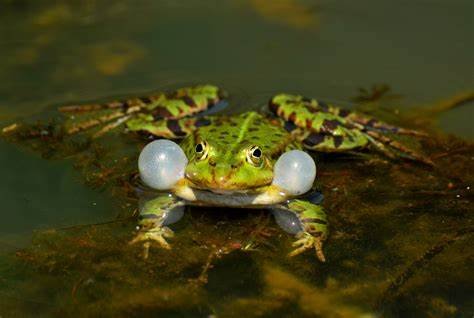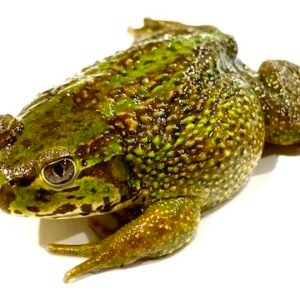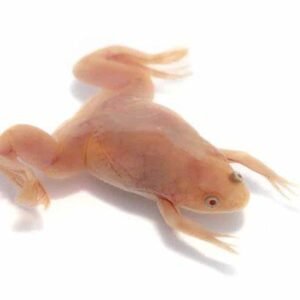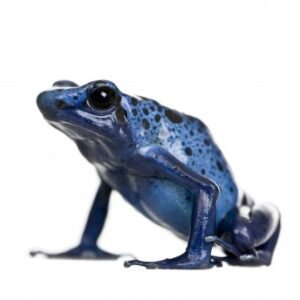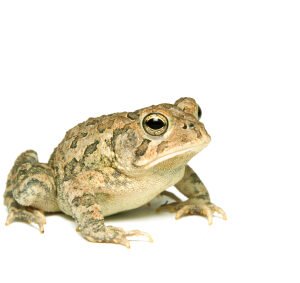The Fascinating World of Aquatic Frogs: A Dive into Their Habitats, Behavior, and Conservation
Introduction to Aquatic Frogs
Aquatic frogs, a diverse group of amphibians, represent a unique subset of the broader anuran family. Unlike their terrestrial counterparts, aquatic frogs are specially adapted for a life primarily spent in water. One of the most striking physical adaptations of these frogs is their webbed feet, which facilitate swimming and maneuvering through various aquatic environments. Their streamlined bodies further enhance their ability to move with agility and speed in water, allowing them to escape predators and capture prey effectively.
These amphibians demonstrate a variety of adaptations that set them apart from frogs that dwell on land. For instance, many aquatic frog species possess glandular skin that helps them absorb oxygen directly from water, an essential feature for survival in their aquatic habitats. This adaptation, along with their ability to produce a range of vocalizations, aids in communication and mating within their specific environments.
Aquatic frogs play a vital role in their ecosystems, serving as both predators and prey within the aquatic food web. As carnivorous hunters, they primarily feed on insects, small invertebrates, and even smaller fish, helping to control populations of these organisms and maintain ecological balance. Conversely, aquatic frogs themselves are a significant food source for various predators, including birds, reptiles, and mammals, thus contributing to the overall health of their habitats.
In addition to their ecological importance, the conservation of aquatic frogs has garnered increasing attention due to their sensitivity to environmental changes. Their presence in freshwater ecosystems can serve as an indicator of ecosystem health, making their protection crucial for biodiversity. Understanding their distinct characteristics, behaviors, and the roles they play can foster greater appreciation and awareness of the challenges they face, ultimately promoting successful conservation efforts for these remarkable amphibians.
Habitat and Distribution
Aquatic frogs, a diverse group of amphibians, are primarily found in various freshwater environments including lakes, rivers, ponds, and wetlands. These habitats provide the essential elements for their survival: water for breeding and reproduction, abundant food sources, and shelter from predators. Lakes and ponds serve as ideal environments where aquatic frogs can thrive, as these bodies of water facilitate both breeding activities and offer a rich array of invertebrate prey.
The geographical distribution of aquatic frogs spans across many regions of the world. From the common American Bullfrog (Lithobates catesbeianus), found predominantly in North America, to the myriad of species residing in tropical regions, the diversity is incredible. In Southeast Asia, species such as the Indus Valley Bullfrog (Hoplobatrachus tigerinus) inhabit rice fields and wetlands, adapting remarkably to various climatic conditions. Meanwhile, in Africa, the African Clawed Frog (Xenopus laevis) is native to freshwater streams and ponds, demonstrating the adaptability of aquatic frogs to their environments.
In addition to their fascinating distribution, it is crucial to address the environmental conditions required for their survival. Aquatic frogs thrive in clean, well-oxygenated waters that support their dietary needs and reproductive cycles. High levels of pollutants can severely impact their populations, making water quality paramount. Unfortunately, habitat destruction poses a significant risk to aquatic frog species around the globe. Deforestation, urban development, and agricultural expansion have led to the degradation of wetlands and other aquatic habitats, thereby threatening not only the frogs’ population stability but the entire ecological balance. It is essential to understand these factors to effectively promote conservation efforts aimed at protecting aquatic frogs and their habitats.
Behavior and Life Cycle
Aquatic frogs exhibit a variety of fascinating behaviors that are intricately linked to their survival and reproductive success. Among the most notable behaviors are their mating rituals, which often involve intricate vocalizations and physical displays. During the breeding season, male aquatic frogs will call to attract females, with different species developing unique calls to distinguish themselves. This vocal competition not only showcases their vitality but also plays a crucial role in mate selection. Upon attracting a female, the male will clasp onto her in a behavior known as amplexus, facilitating the fertilization of eggs as they are laid in water.
The life cycle of aquatic frogs is a complex process involving several distinct stages: eggs, tadpoles, and adult frogs. The eggs are usually laid in clusters, floating in water, where they hatch into larvae, commonly known as tadpoles. These tadpoles undergo significant metamorphosis, transitioning from gill-breathing aquatic creatures to air-breathing adults. This transformation includes the development of limbs, the absorption of the tail, and the transition from a herbivorous diet to a carnivorous one. Adaptations for both aquatic and terrestrial life are critical, as adult aquatic frogs often spend time both in water and on land, making them versatile inhabitants of their ecosystems. Understanding these behaviors and life stages is essential for appreciating the complex lives of aquatic frogs and their critical role within their habitats.
Conservation Efforts and Threats
Aquatic frogs are an essential component of their ecosystems, contributing to both biodiversity and environmental balance. However, they face numerous threats that jeopardize their survival, including pollution, climate change, and the introduction of invasive species. Pollution from agricultural runoff, industrial waste, and urban development contaminates their habitats, leading to declines in populations. Chemical pollutants can disrupt their reproductive systems and lead to various health issues. Furthermore, the encroachment of urban areas can result in habitat fragmentation, isolating frog populations and making them more susceptible to extinction.
Climate change poses another significant risk to aquatic frogs. Altered weather patterns give rise to temperature fluctuations and unpredictable rainfall, impacting their breeding cycles and habitat availability. For instance, increased temperatures may lead to drought conditions, shrinking suitable breeding sites and reducing the availability of food sources. In addition, climate changes can promote the proliferation of diseases such as chytridiomycosis, which has devastated amphibian populations globally.
The introduction of invasive species further complicates the survival of aquatic frogs. Predatory fish and other non-native species can decimate frog populations by preying on their eggs, tadpoles, and adult frogs. The competition for resources intensifies, making it increasingly difficult for native species to thrive. Conservation efforts are crucial to mitigate these threats. Initiatives such as habitat restoration, pollution control, and legislative measures aimed at protecting aquatic ecosystems are in place across various regions.
Organizations worldwide are dedicated to safeguarding the habitats of aquatic frogs, raising awareness about the importance of these remarkable amphibians. Engaging in community awareness programs and supporting policies that advocate for environmental conservation can significantly impact the survival of aquatic frogs. By participating in conservation initiatives, individuals contribute to the preservation of biodiversity and help ensure that future generations can appreciate the incredible diversity of life within our aquatic ecosystems.

